Ketches and sketches
When I was invited to give a talk at the London Boat Show on marine art, I faced the challenge of making a half hour slot as useful as possible. What I came up with is my ten tips for sketching boats, which I promised the audience (delightfully attentive and well behaved!) that I would post on my website. So here is the gist of the talk, and I apologise for the fact that this post goes on longer than usual!
I love encouraging others to draw – the language of line is available for all. Sketching makes you look at everything afresh, it improves your powers of observation, and enhances your travel diary or ship’s log. Drawing complements words and it doesn’t have to be perfect. Sketching is simply ‘thinking with a pencil’, and it is very, very good for you.
These are by no means comprehensive, but enough to get you started I hope….
TIP ONE – just do it!
Carry a small sketchbook and pencil or sketching pen everywhere – and use it! Yes, your first attempts will embarrass you but persevere; the pictures at the end of the sketch book will be better than those at the beginning. I promise. But only if there are no blank pages in between! You don’t have to work in colour if you don’t want to, but this is my sketching kit – book, paints, brush, pen and red wine. Somewhere out of shot is a cup of water for dipping the brush in, but this has to be separate from the wine or they get mixed up.
TIP TWO – start anywhere – just start
Forget about perspective. Just draw what’s in front of you. Start with what interests you and work from there. Start in the middle of page, go slowly, and let your eye and hand move around the shapes together. If you get it wrong, excellent! Make notes of what’s gone wrong and try again. Your brain is lazy – it will try and make you draw what you think is there rather than what is really there.
TIP THREE – measure and compare
Drawing is all about relationships. No, not those kind of relationships… (just put that it for some light relief)
It’s about how each element relates to each other. Compare the height of mast to length of hull. Where on the hull is the mast stepped? Two thirds of the way from the stern? Measure. Get the hull line and mast positions right before doing anything with sails or detail.
If the basic proportions are right, the rest will follow. No amount of shading or detail can cover up the wrong shape. Hold your arm out and measure with pencil or thumb, make the comparisons. Never mind it you feel stupid doing it!
TIP FOUR – Look at the spaces inbetween
Your eye reads all shapes, including the ones inbetween solid objects. In this sketch, don’t look at the sails, look at the sky spaces inbetween. These form part of the composition, and can help enormously in getting a drawing right. This was done on the foredeck of a sail training ship. I took photos too and back home worked the two together to make this:
 The blue bits are as important as the white bits!
The blue bits are as important as the white bits!
TIP FIVE – Don’t keep rubbing out
If you rub a wrong line out, you stand a good chance of getting it wrong again. Leave it there, and you know that’s one place to avoid! Work lightly to begin with, then do a stronger line when you’re happy with it. A good cure for eraser-dependence is to go straight in with sketching pen. It makes sure you don’t faff, and if you end up with a mess, who cares! It’ll be a creative mess, and that’s allowed.
TIP SIX – Draw boats on the move
You can play safe and draw boats on moorings, or work just from photos, but you’ll train your eye better if you try and draw a fleet of racing dinghies or a boat on the move. Expect it to be wrong, just have a go and let your hand respond with a series of lines that echo the curves. Even if the result looks a mess, it will have some of the feeling of the occasion and much more life than a static copy.
TIP SEVEN – Cheat!
A delightful book by Michal Leszczynski published in 1944 entitled ‘How to draw Sail and Sea’, has stern words on the subject of drawing from photos:
If you are not old enough to Sign the Articles and join a real ship, your drawings should be of imaginary vessels. Call to mind any ship and give her all sorts of commissions, and draw her in various adventures of her imaginary career. But you should never use photographs or pictures by other artists as a basis for your own sketches.
You’ll be relieved to know that I don’t agree with that. Yes, it’s ok to work from photos. On a rainy day in winter, you have to. But…. wherever possible, work from your own photos, observation and sketches. The next best thing is to work from other people’s photos, but ask their permission first. Change what you need to change. Trace if you need to, but treat it as a crutch – useful for tricky bits but if you hold onto it you’ll never be free to run. Develop your own skills or your paintings can end up neat but lifeless.
TIP EIGHT – Start to notice things
I couldn’t find a picture of me noticing things, so this is a picture of me doing just the opposite.
We don’t look at anything properly unless we are trying to draw it. Even when you don’t have a sketch book in your hand, ask questions of your eyes as if you do. What shape is the bow? What’s the shape of the wave curling past the hull? Is the sea darker or lighter than the sky? Are there reflections?
TIP NINE – Don’t beat yourself up if it’s not perfect
Your appreciation of art will always be many steps ahead of your ability to draw. The gap may narrow, but it is always there, which is why if you ask any professional artist to choose one of their own paintings they are most proud of, they will usually say ‘I can’t, I haven’t painted it yet!’
It doesn’t matter if you get it wrong. You’ll do better next time, especially if you work out which bits are wrong, and why. Anyway, it’s not for the Royal Academy, it’s your sketch book or ship’s log, your view of the scene. Better a bad drawing than none at all! And if your family laugh at your sketches, challenge them to do any better.
TIP TEN – Keep away from the mud
If you do feel brave enough to get out the watercolours and have a go, you can get very bogged down with trying to use too many colours. What you end up with is mud. The watercolour artists of the 19th century had a much smaller choice of pigments than we do now, so they knew a thing or two about keeping colour mixing simple. Stick to three primaries – try indigo, light red and raw sienna only for the authentic moody 19th century feel!
That’s it – hope it helps. If you’re feeling inspired, I happen to have sketchbooks for sale with all sorts of useful advice on the front and back cover to keep you going. Scroll down to the bottom of the BOOKS page to buy –https://claudiamyatt.co.uk/books/ Just remember, as every sailor knows, the journey is more important than the destination – and don’t forget the wine for essential inspiration!

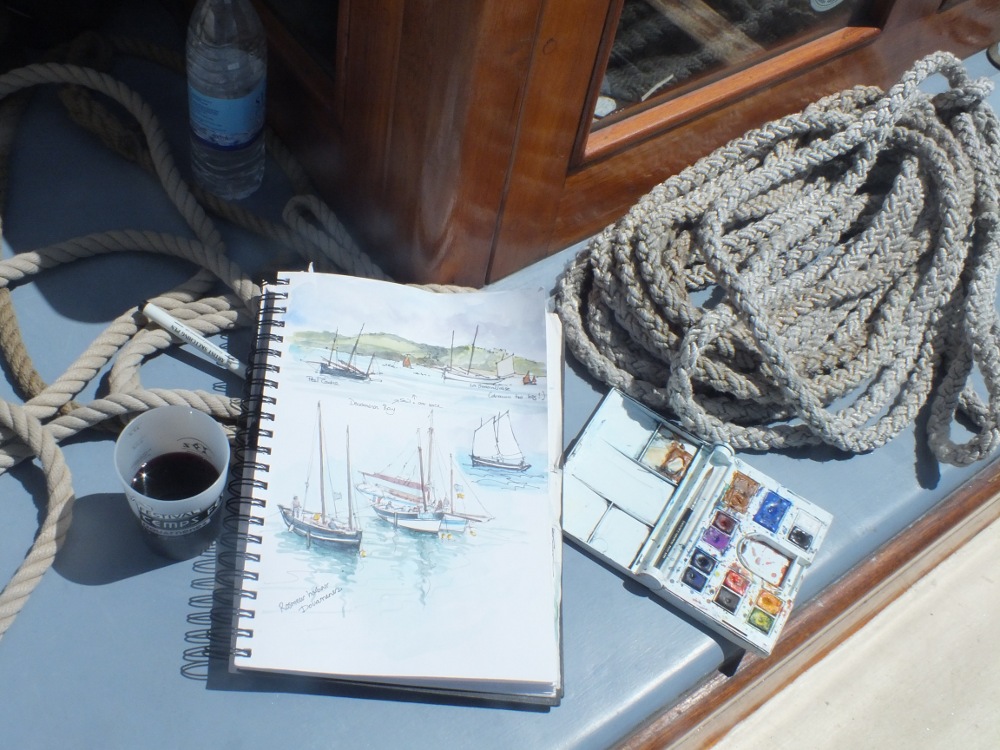
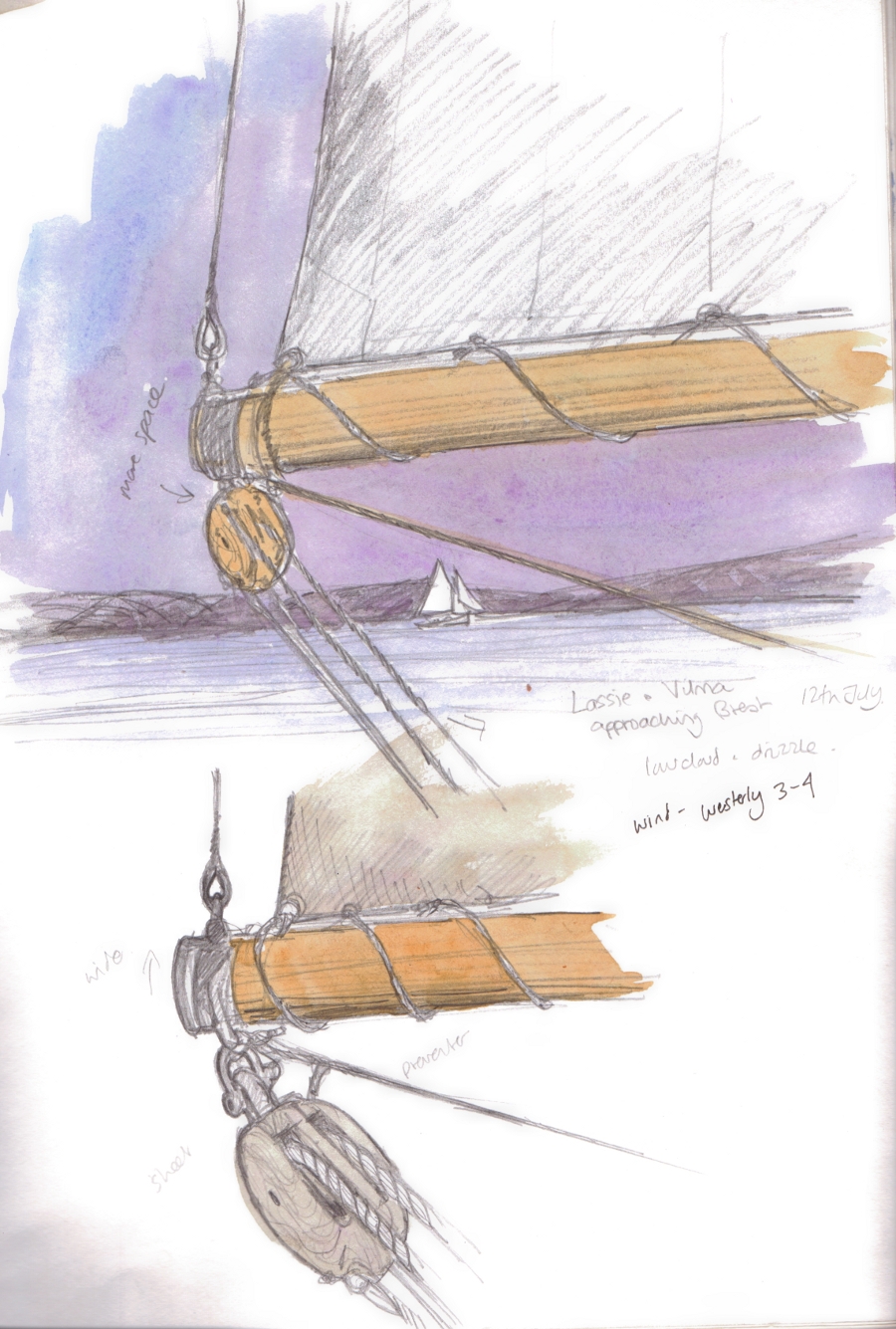
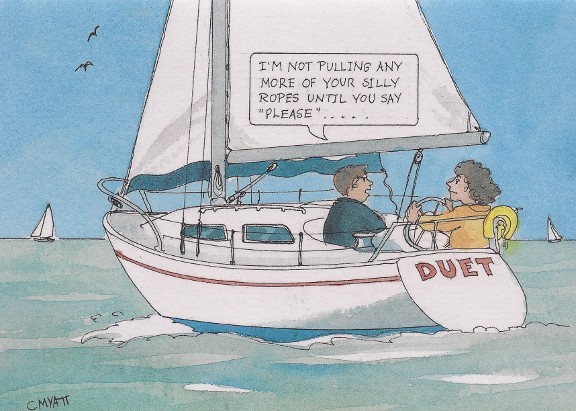
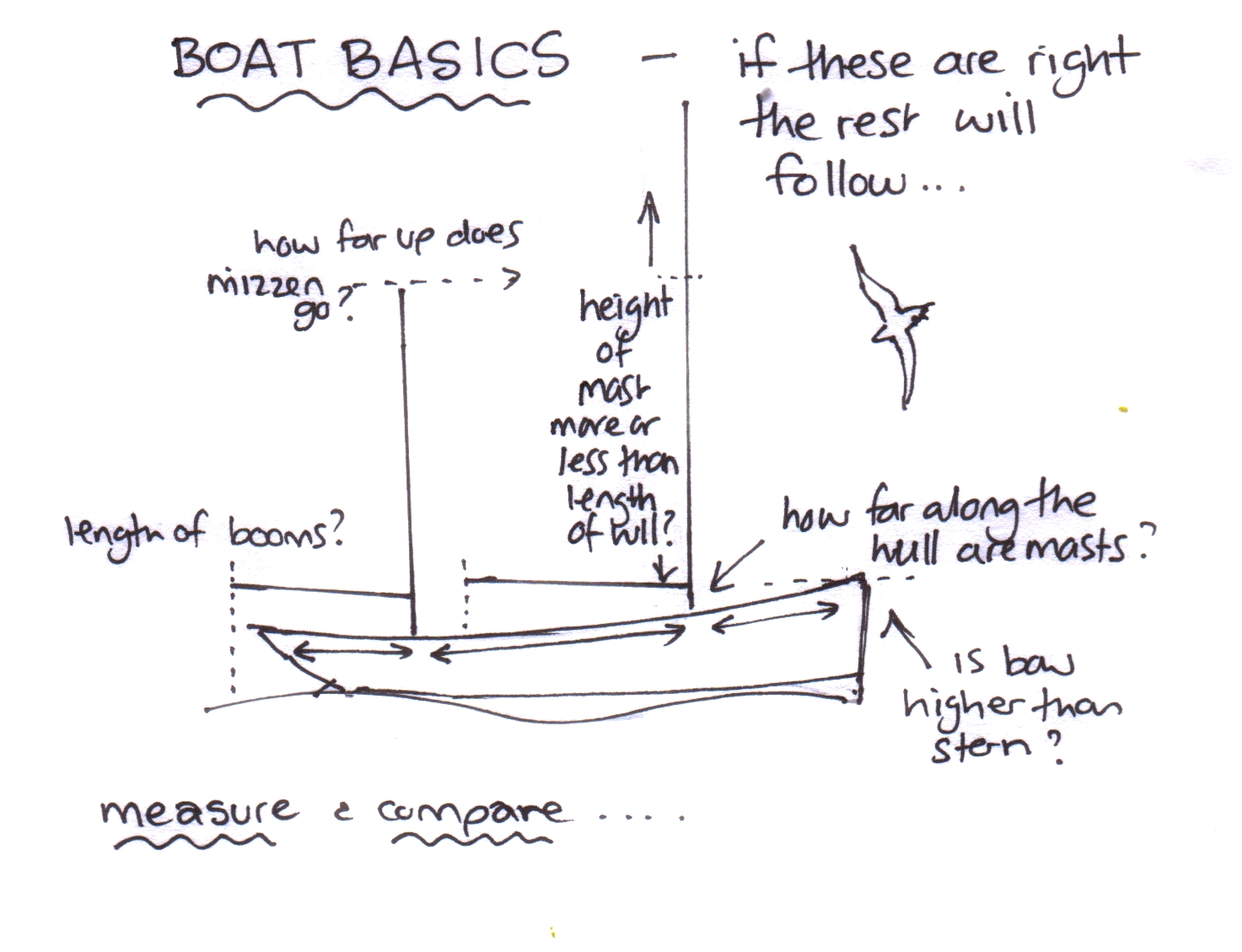
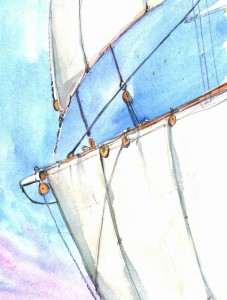
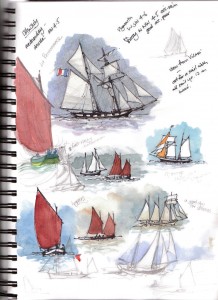
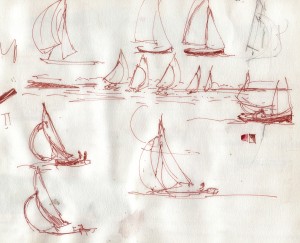

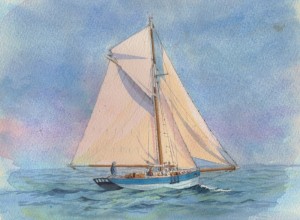


This is so useful Claudia, I’m going to give it a go! 🙂
cracking stuff.
That reminds me… where’s my sketch book?
A useful reminder of some of the lessons we learned on our excellent 1 day course with you! Good to have them recorded in one place.
Admire your easy style. And things you are talking are 100% truth in any space of life…
Love it. When the weather warms up I’ll have a go again.
Cheers! Shirley
Great tips Claudia – thanks. Was on a roll until I got to no 10…
Thanks Tony – no good telling you to ‘keep away from mud’ anyway, is there!
Thanks Arturas, good to hear from you again, hope all is well and you are still enjoying using ‘Go Sailing’.